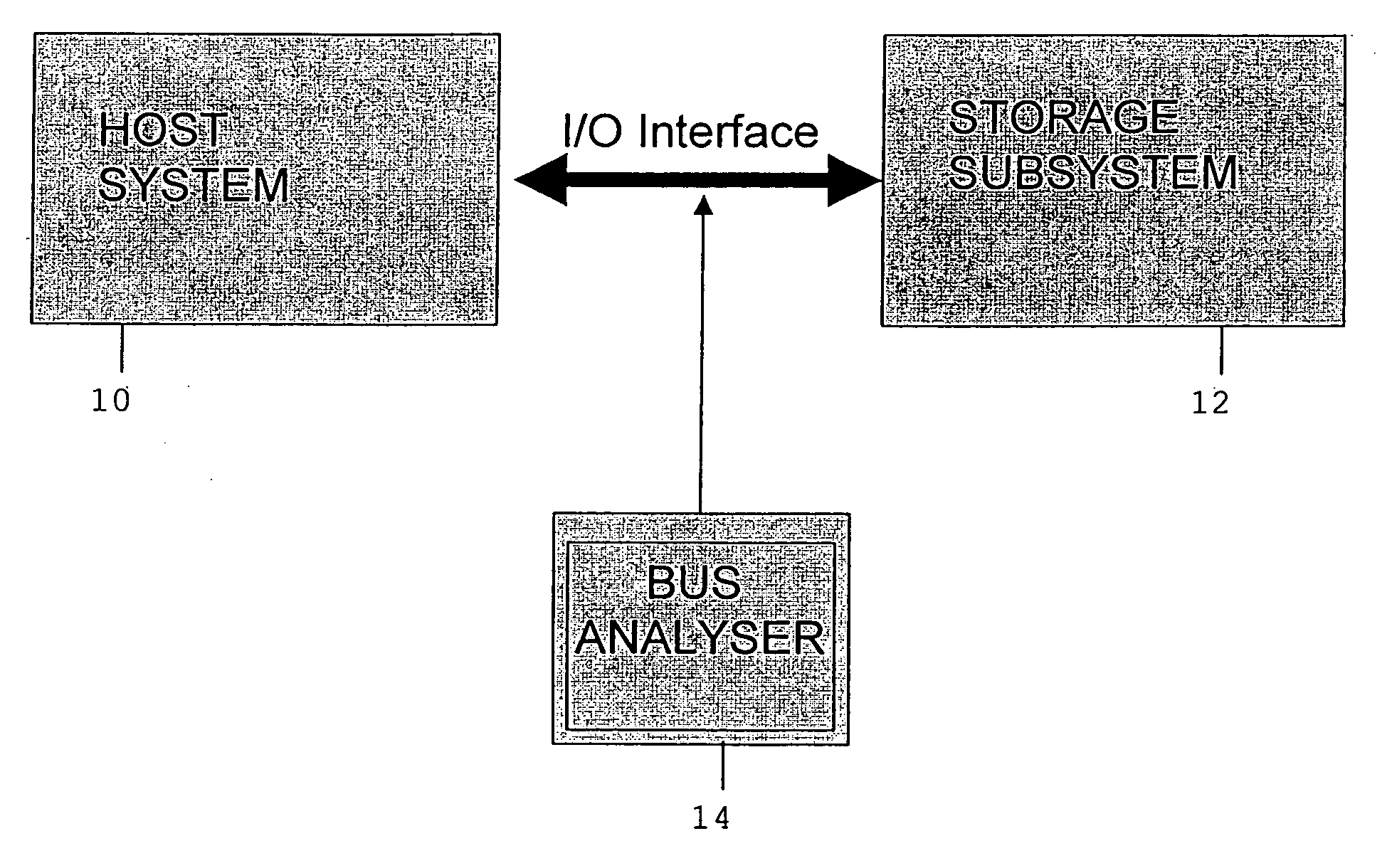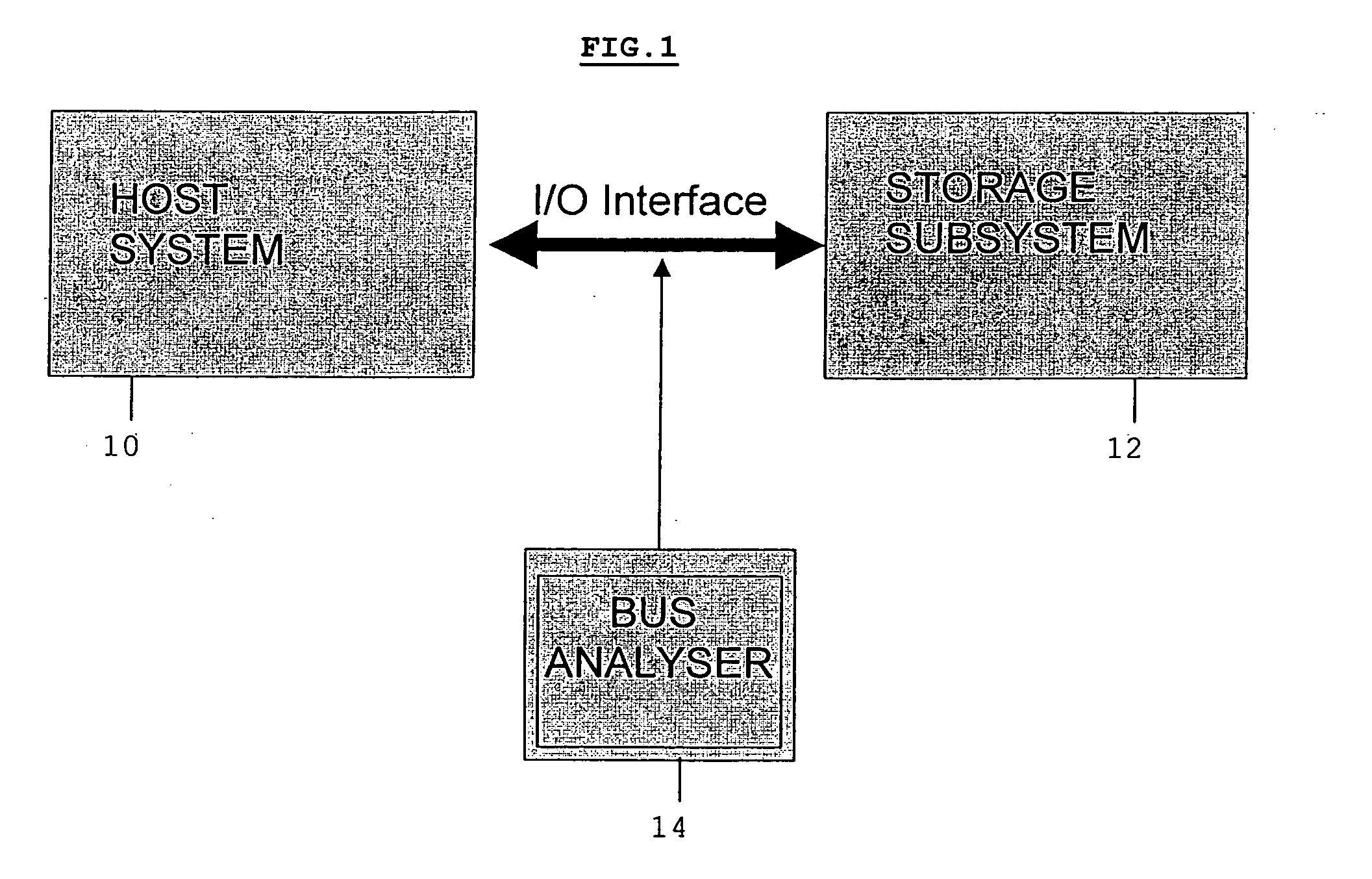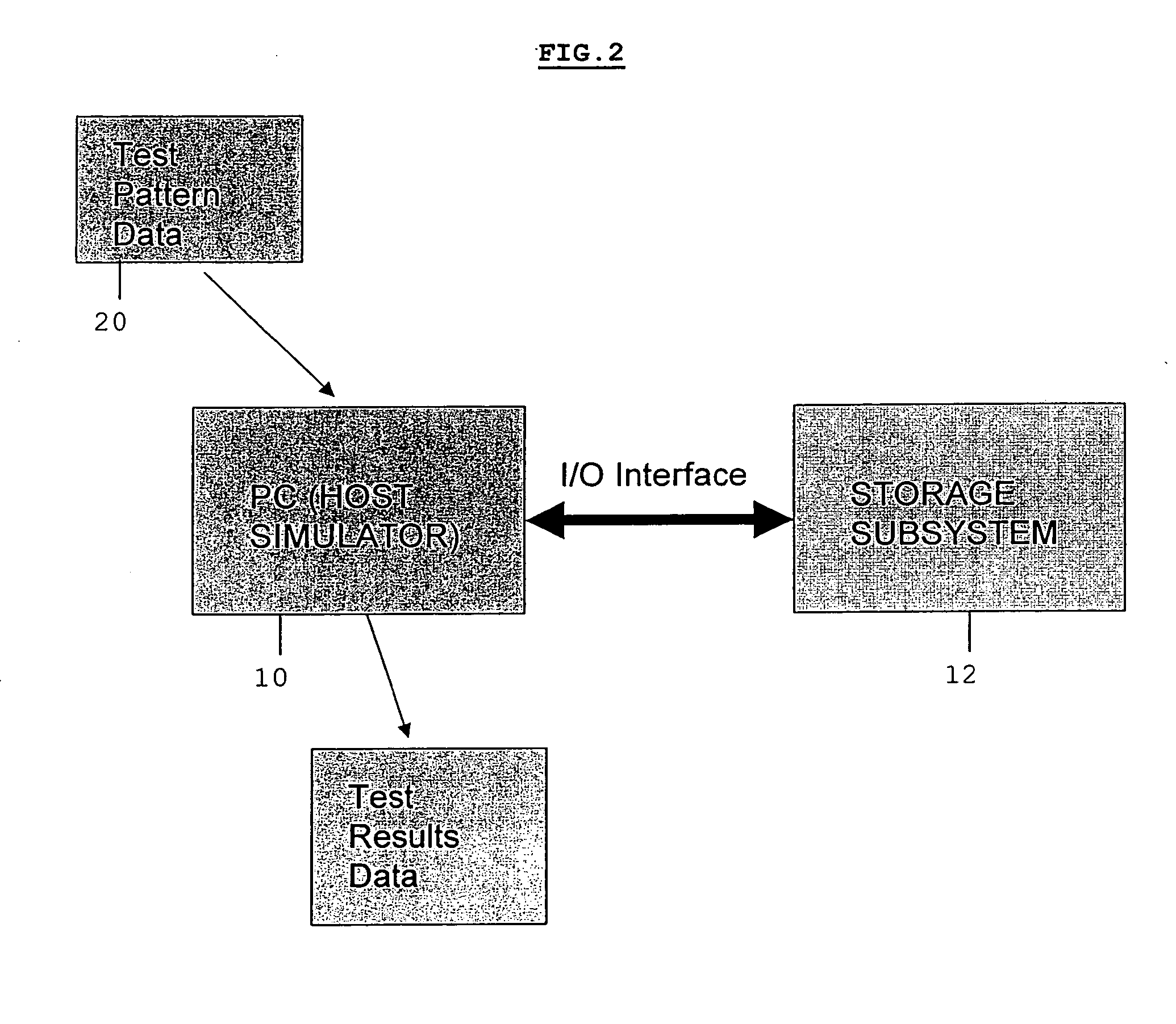Analyzing the behavior of a storage system
a storage system and behavior analysis technology, applied in the field of analysis of the behavior of a storage system, can solve the problems of not giving accurate or absolute control over several progressive characteristics of an i/o event pattern, not offering specific time scheduling of independent and interrelated events, etc., to achieve the effect of quick and easy modification
- Summary
- Abstract
- Description
- Claims
- Application Information
AI Technical Summary
Benefits of technology
Problems solved by technology
Method used
Image
Examples
Embodiment Construction
[0047] In the following description of embodiments, reference is made to “threads”, which have also been referred to above. A thread is a time sequenced plurality of operations, i.e. a plurality of operations in a sequence according to a timing schedule. The thread will have a common set of factors. Thus, the first thread may have a timing factor of 500 ms (frequency 2 Hz), involve a WRITE operation, three commands, and transfer two hundred sectors of data each command. A second thread may have a timing factor of 2s (frequency 0.5 Hz), be a READ operation, involve one command, and transfer one hundred sectors of data each command.
[0048] By running several threads an overall plurality of operations is created, which are time-interleaved according to their timing factors.
[0049] Moreover, subsequent discussion will refer to an “event”. This is the occurrence of a single operation in a given thread, so that the total set of operations created by several threads running concurrently, e...
PUM
 Login to View More
Login to View More Abstract
Description
Claims
Application Information
 Login to View More
Login to View More - R&D
- Intellectual Property
- Life Sciences
- Materials
- Tech Scout
- Unparalleled Data Quality
- Higher Quality Content
- 60% Fewer Hallucinations
Browse by: Latest US Patents, China's latest patents, Technical Efficacy Thesaurus, Application Domain, Technology Topic, Popular Technical Reports.
© 2025 PatSnap. All rights reserved.Legal|Privacy policy|Modern Slavery Act Transparency Statement|Sitemap|About US| Contact US: help@patsnap.com



